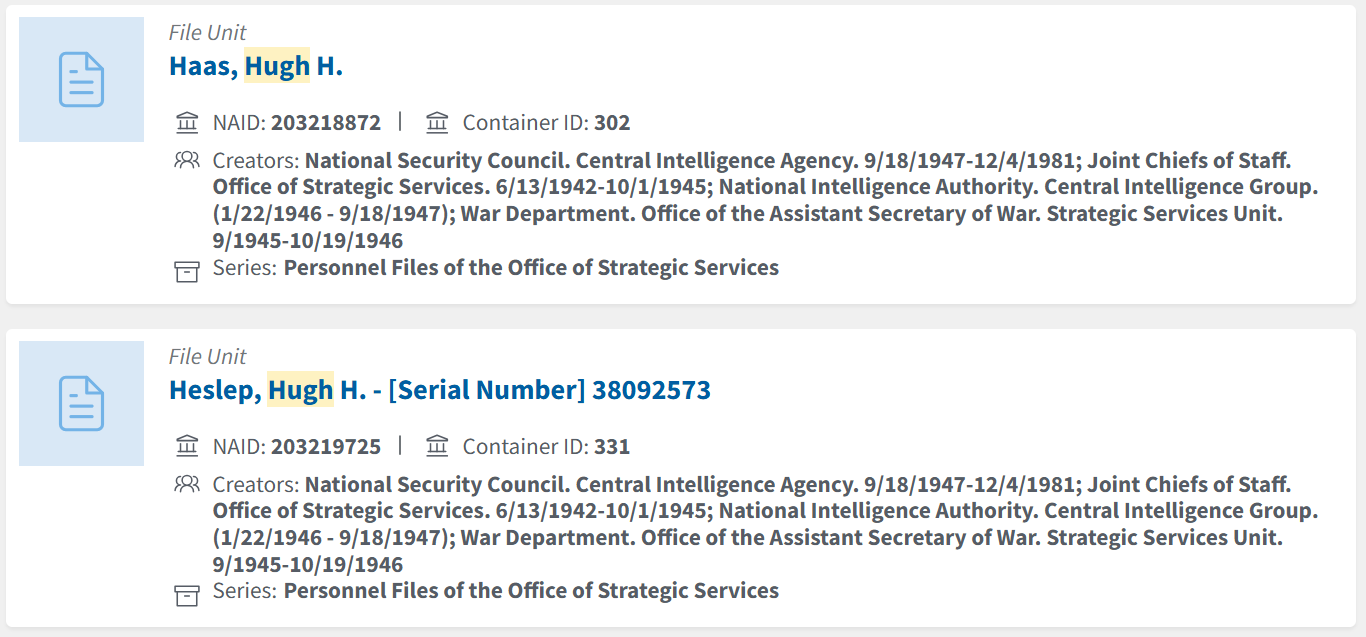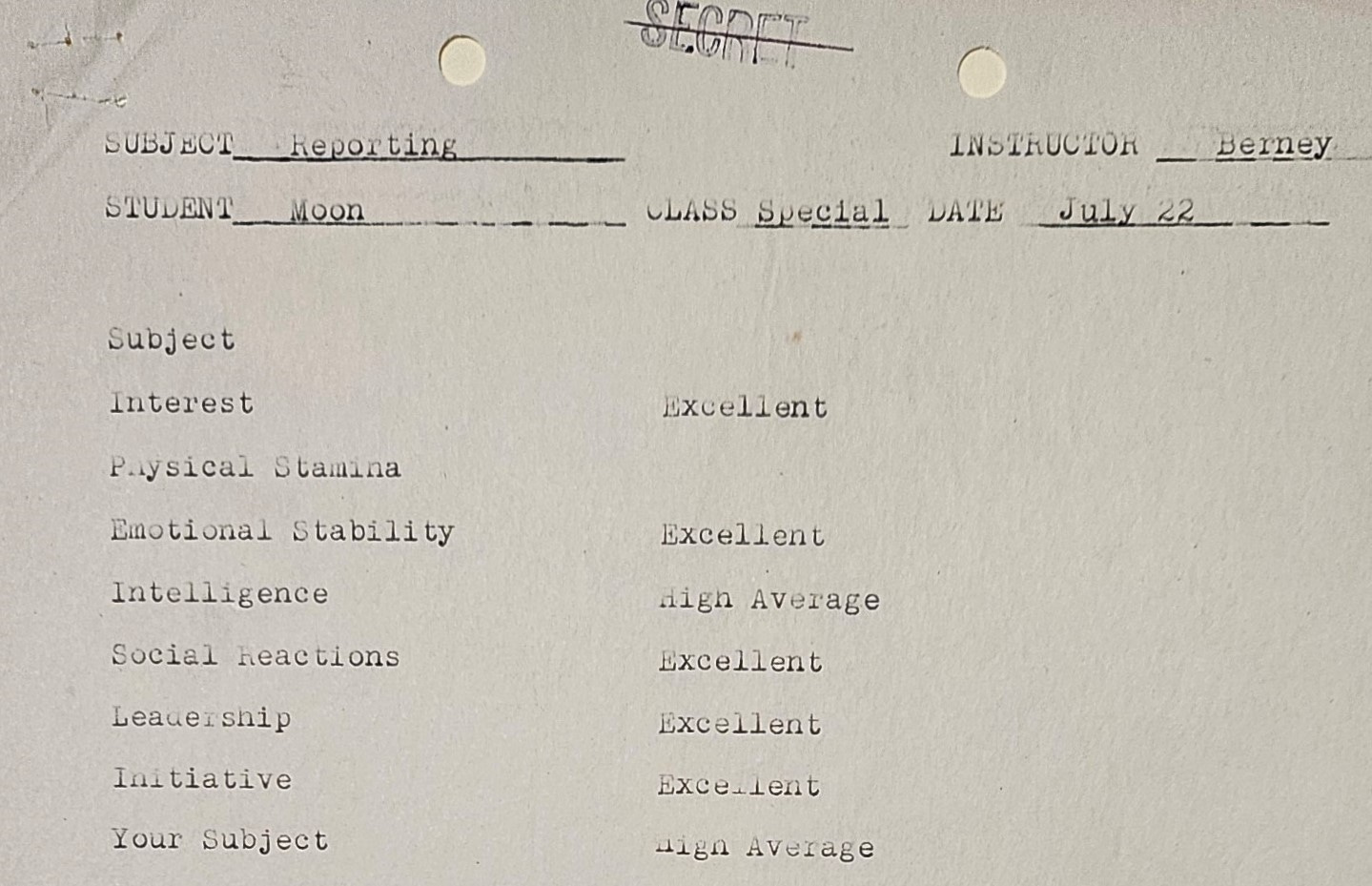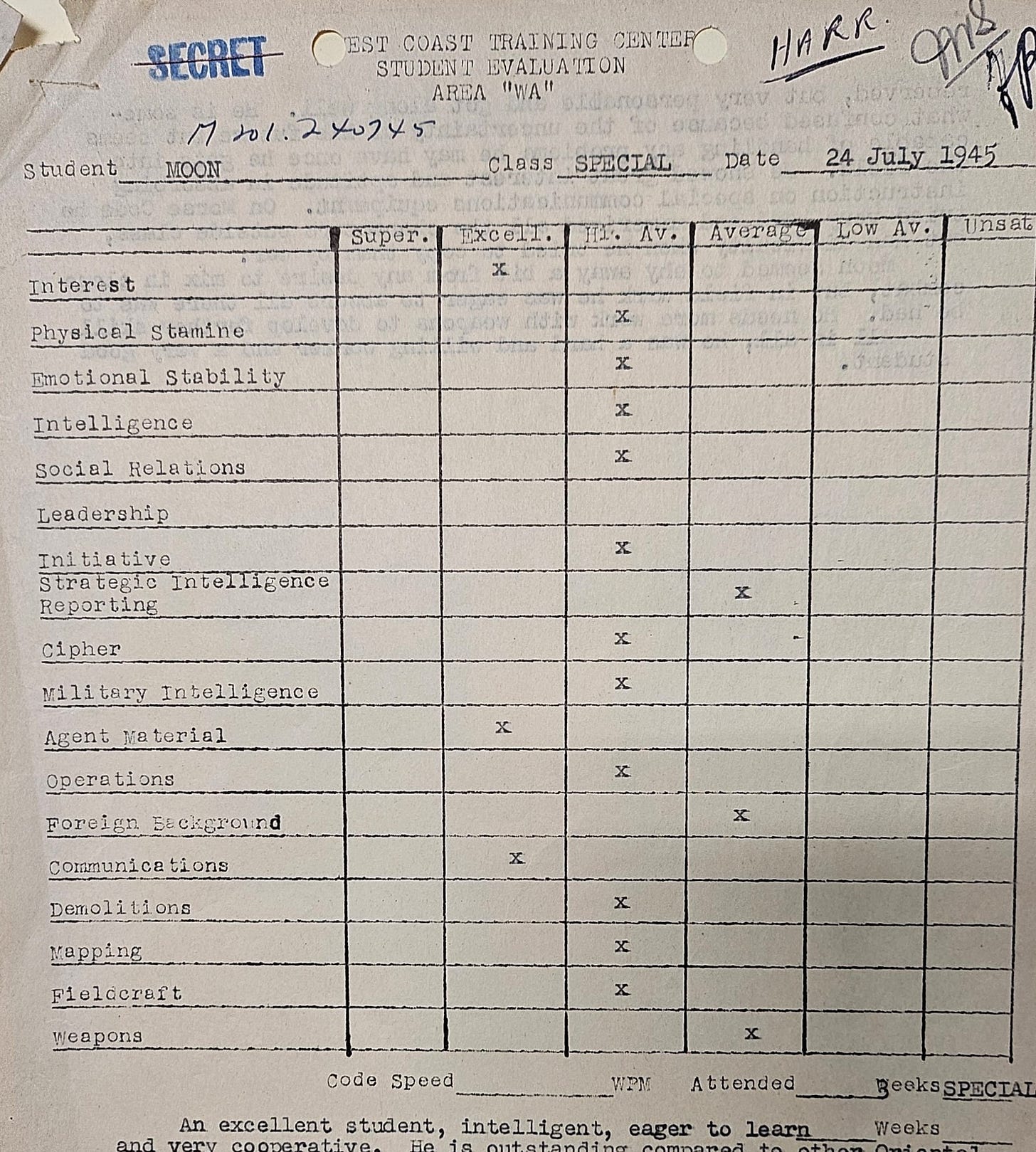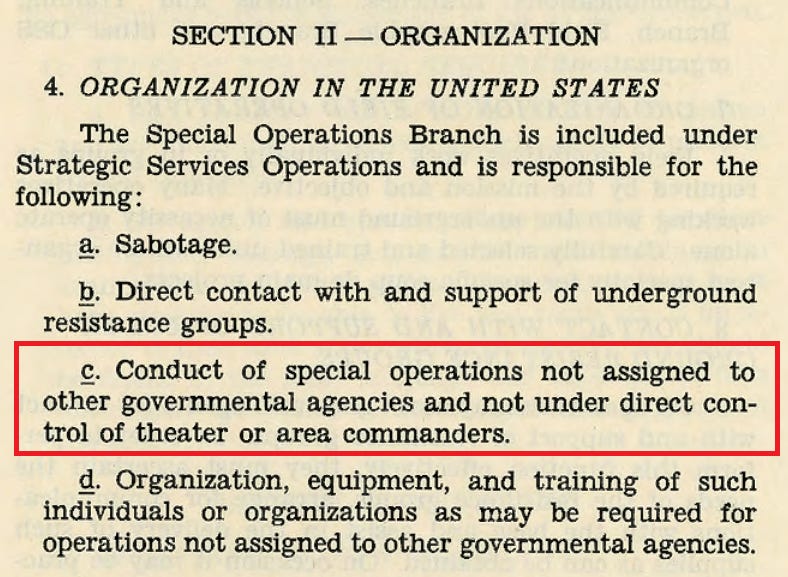Over the last week, I have taken a step back to examine all that I have surfaced about Jay Reid’s cousin Karl Harr.
Out of everything in Karl’s record from 1940-1960, his possible connection to the Office of Strategic Services (OSS) is, I believe, by far the most important to uncovering Jay’s classified relationship with the CIA.
In December, I presented my theory of the case regarding the OSS personnel file for an agent called Moon Duck Harr. I followed that with a deep dive on outstanding questions around who in addition to agent Harr was attending the OSS training school on Santa Catalina Island, off the coast of California, in the summer of 1945, and for what purposes.
Knee-deep in OSS personnel files
I suspect there is more information related to Karl that is hiding among the 23,000+ personnel files housed at the National Archives in College Park, Maryland.
In studying the online listings, I have noted that:
Officers (or operatives, as they were called in the OSS days) have serial numbers, but agents do not
An operative is “an individual employed by and responsible to the OSS and assigned under special programs to field activity”
Agents, in many cases, appear to be pseudonyms that can be matched to officers; however, agents can also be separate individuals managed by a case officer (or operative)
An agent is “an individual recruited in the field who is employed and directed by an OSS operative or by a field or sub-base”1
In addition, I have noticed a few different patterns in how the OSS used open code to assign pseudonyms (remember, the serial number indicates the name that corresponds to an operative, or real person).
In the above example, the first name is paired with different middle initials and a pseudonym surname that matches the original in the prefix “Fried” and also features a German-Jewish sounding suffix.
In the second example, we find matches for the first name and middle initial, and surnames that both begin with the letter H.
In the final example, we have matching first names and surnames that begin with “De” and include a double consonant (DeHosson and De Nedde).
As I comb through the personnel files, I am identifying possible pseudonyms related to operatives of interest and pursuing copies of the files.
OSS report card
When I presented my early findings from the Moon Duck Harr file, one section I did not discuss was the agent’s grades earned in training courses.
I didn’t have enough background information to understand what a lot of it meant. And while I do not have it all figured out yet, I have deciphered enough to help us draw some real conclusions.
I’ll start with the grades for Harr’s personality strengths and weaknesses.
In each graded area, Harr scored either a 5 out of 6 (Excellent) or 4 out of 6 (High Average). This, presumably, is in comparison to others who went through the training, and the OSS was known to recruit elite candidates (Ivy League graduates, professors, etc.).
While Harr scores higher than many of his peers, it is noteworthy that in his subject, Reporting, he only managed a High Average grade.
Additionally, Physical Stamina is left blank - suggesting he wasn’t even evaluated on this measure. Combine this curious omission with an Average grade in Weapons, and we have to question whether this agent was ever intended to see action in a combat zone.
Two more findings that contrast with the cover story that Harr was among a group of Korean POWs recruited to become agents in preparation for an upcoming invasion of Japan are:
The agent received an Average grade, his lowest, in the category of Foreign Background, suggesting the agent was not Korean and was unlikely to pass as such.
Harr’s grade in Weapons, Average, does not align with someone the OSS would send out into the field with the main purpose of ever firing a gun.
The cover story is fully punctured by this passage in the Special Operations field manual:
SO [Special Operations] may recruit civilians of United States or other nationalities. By agreement with the armed forces, members of the United States Army, Navy, and Marine Corps may be assigned to OSS and detailed to SO for service. Members of the armed forces of our Allies may be attached to OSS and detailed to SO for duty, in each case by agreement with the authorities of the nation concerned.
By definition, Karl could have been recruited from the U.S. Army, but a Korean prisoner of war could not have been, since only members of allied armed forces were eligible for OSS service.
What was Class: Special?
Harr’s training was in Special Operations. According to the Special Operations field manual:
The mission of the Special Operations Branch is to carry out that part of the OSS mission which can be accomplished by certain physical subversive methods as contrasted with the operations of the Morale Operations, the Operational Groups, and the Maritime Unit. The primary objective of the Special Operations Branch is the destruction of enemy personnel, materiel, and installations.
Page 6 of the field manual spells out what I believe the OSS intended for Harr.
Special Operations agents were saboteurs, cutouts, trainers, or what sounds like deep cover agents who reported directly to OSS leadership.
The manual adds the following details, which are still quite broad in scope (emphasis added):
From neutral areas or in areas not under a military commander, SO may recruit and train personnel or conduct operations in enemy or enemy-occupied countries as directed by Strategic Services in Washington, Chief of the OSS Mission and at field bases. For this type of operation, instructions must be clear and explicit to make sure that SO does not overstep its authority or clash with any other agency, or provoke undesirable diplomatic or political complications. The Chief of the Diplomatic Mission should be advised of such contemplated operations.
According to field manual, my hypothesis that Karl was agent Moon Duck Harr, run directly from Washington on an operation that pushed boundaries and had the potential to “overstep its authority or clash with [another] agency” is plausible.
Coming up
Important as he is, Karl is just one piece of this puzzle.
Prior to speaking with a university history professor last summer about my research, I wrote a detailed summary of what I had learned and why the research was important.
The kicker - I never even mentioned Karl by name. Out of 10 typed pages, only 12 words indirectly referred to this aspect of the broader story.
Partly, that is a result of my having learned a lot more about Karl over the last five months. However, it is also an indication of just how much of this story I have yet to detail in this newsletter.
As I acquire new documents related to Karl’s doings from 1940-60, I will share the findings and how explain how they fit into the broader case.
But coming up, I’m going to take you on a tour of other, inter-connected rabbit holes.
Definitions. Special Operations Field Manual - Strategic Services (Provisional). 1944. Pg. 2.







